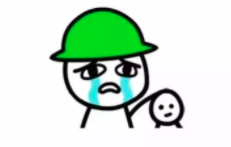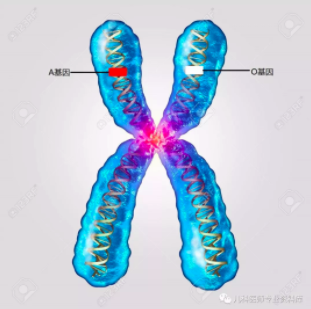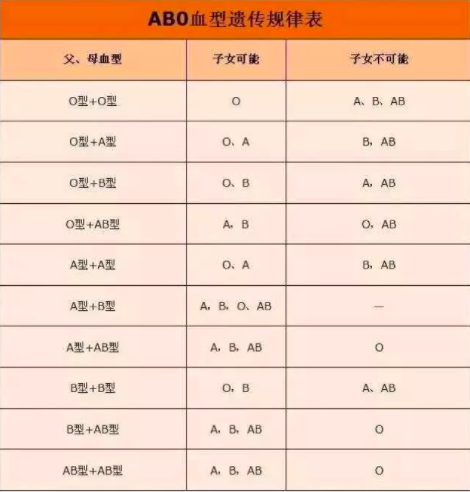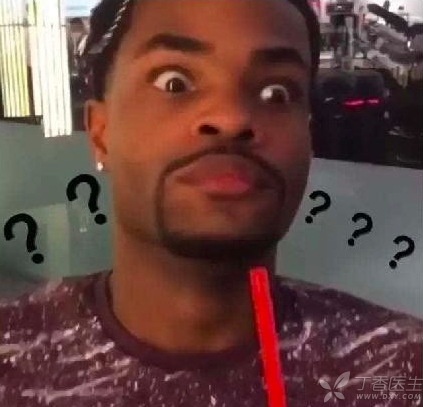On the topic of blood type, the interesting content is really special! No! Many!
Some time ago, we published a short article on the blood type relationship between parents and children. Many parents said after reading it: Wow! It’s amazing! Got it
The world is so big that it is very strange to have such a case:
The father is type B blood and the mother is type O blood. The child is sure that there is no mistake, but it is found to be type A blood.
Huh? Aren’t Type B and Type O only babies who give birth to non-O and B? Don’t…

In order to find out what was going on, the family also did a paternity test (DNA test).
The final result came out that the child was indeed the father’s.

Why is this happening? Is it a baby gene mutation?
Today, Dr. Kong Lingkai came to take us [closer to science] and tell us about the mystery.
Blood type inheritance, what is inherited?
Let’s first talk about the basic knowledge of blood type heredity (high school biology).
The blood type of human body is determined by three alleles A, B and O on a pair of chromosomes, of which A and B are dominant genes and O is invisible genes.

On the above pair of chromosomes, because the O gene is a recessive gene, only the phenotype of the A gene is shown, which is type A blood.
By analogy:
B gene (dominant) + O gene (recessive) = blood type B
A gene (dominant) + A gene (dominant) = blood type A
B gene (dominant) + B gene (dominant) = blood type B
A gene (dominant) + B gene (dominant) = blood type AB
O gene (recessive) + O gene (recessive) = type O blood
Isn’t it easy to understand? Look at the picture to make it clearer:

As for the child’s blood type, half of the genes are inherited from his father and half of the genes are inherited from his mother. According to the laws of the conventional blood type genetic table, according to common sense, it is an introduction:

According to the above table, the father is type B blood, the genotype is either BB or BO, the mother is type O blood, and the genotype can only be OO.
The child’s genotype can only be BO or OO, and there is no possibility of A?

We will find out the answer immediately.
There is a type O blood, which is [pseudo-type O blood]
This child is indeed the couple’s own baby, but the blood type is not right. The problem lies in the mother’s blood type.
This is the world’s O-type blood, divided into two types, [true O-type blood] and [pseudo-O-type blood].
[Pseudo-O blood] is a particularly rare blood type, also known as [Mumbai blood] (also known as Mumbai blood type).
ABO blood group test is to detect erythrocyte surface antigen.
There are two kinds of antigens A and B. Antigen A is formed by attaching acetylgalactosamine to H antigen, antigen B is formed by attaching galactosamine to H antigen, and type O blood is not added to what on H antigen.
In other words, H antigen is the foundation, and A and B antigens are the buildings on the base.
H + A = A antigen
H + B = B antigen
Both A and B antigens have = AB type blood
Only H antigen = type O blood
No H antigen = Bombay blood type
Mumbai phenotype, because there is no H antigen, so the A gene and the B gene, which also do not form A and B antigens, show type O blood, and in ordinary blood tests, also show type O blood.
Although the mother in this article shows type O blood, the antigen on the red blood cells contains gene A.
The child obtained the gene containing type A blood from the mother of Mumbai blood and the gene containing type O blood from the father. Therefore, the child is type AO blood, which is manifested as type A blood.
Although this phenomenon is very rare, the child’s mother is really a mother-in-law! Dad! It’s really my father!
Bombay Blood Rare Than [Panda Blood]
Is it amazing to see here?

Mumbai has the largest blood type in India, more than 1/10,000, and very few in Europe, about 1/1 million. There is no specific data in mainland China, Taiwan and Hong Kong are about 1/8000-16000, and Fujian and Taiwan are similar.
Some people will say that this proportion is quite large. Why is there not many cases reported nationwide?
Because the first total number of blood type tests is small, the second ordinary blood type tests cannot find Mumbai’s blood type, and can be found by going to the blood station.
Although it is said that you don’t need to know at ordinary times, Mumbai blood is really very rare when blood transfusion treatment is needed, even rarer than [panda blood].
Therefore, we often see news like [rare blood] asking for help:

In addition to the case where the mother in the case is Mumbai blood, according to different genetic combinations, the child can also be Mumbai blood type carrying B blood type gene and AB blood type gene, but during the examination, all will show O type.
In the future, there will be news that [the blood type of the biological child and the parents are not the same], and there will be no need to surprise your chin.
